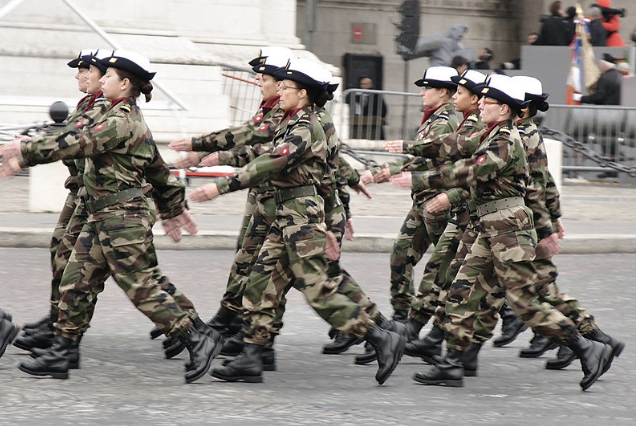Women In The Ranks Of The Armies

Until the shores of the twentieth century, the military domain was preserved for the absolute with a hunt reserved for the male gender, although we cannot deny the legendary role that the women occupied during the period of war, in support of the operations military operations.
However, noticeably since the 1970s, the employment of women in the armed forces has become essential with the presence of female personnel taking on substantial roles in non-combatant arms and services, and also currently carrying out major military tasks. These even include combat stations in the navy and in the air force.
However, in the case of countries such as the United States and the United Kingdom, access to such positions in the army remains closed to women, a position formally confirmed in the British case in May 2002. The place of women in the military marks the reality that the military world continues to possess unique social and cultural characteristics that give it an apparent authenticity to the societies they serve or represent.
Regarding the purely political and intellectual debates about the role of women in the military, the conservative view can be considered to underestimate the operational capacity and effectiveness of women in the current military organization; For its part, the progressive perspective downplays the fact that certain areas of military life, despite the ongoing process of gender mainstreaming, stand any chance of remaining a male hunt.
Women are not inherently superior to men in matters of protection, and although this belief would be widely held by the population of the country in which the forces are called to enter the scene, the assistance of female soldiers would undoubtedly help. throughout the said conflict resolution process.
- It is now more than 4000 years that the woman, holds majestic roles in the ranks of the various armies of the world.
- The military woman operates side by side with the military man.
- Women certainly exercise their profession in the field and, with the progress in mentality brought about by the professionalization of the armed forces, they are more and more present and involved in operations.
- In October of 2016, 294 of the 6,388 Army personnel deployed on foreign operations were female.
- The mentality about the women in the ranks of the armies has changed a lot.
- In twenty years the number of military women has rocketed in the ranks of the French armies.
- Surprisingly, the feminization of the profession has slightly influenced the image of women, which remains linked to fragility.
- The armies are supposed to welcome women and men without there being any sense of discrimination.
- In return, the armies are not restricted to implement the policy of quotas for the product of women in order to anticipate any possible weakening of the military power of the armies.
- A garment is a product intended for clothing, and which in turn aims to cover a part of the human body.
- The materials used to aspire to be renovated over time.
- The vocation of a garment changes according to the different cultures and phases of history.
- The vocations of a garment are, in a first-place the practice, which reflects the function of protection, then the symbolic function indicating a moral posture, and finally the social function which represents a status.
